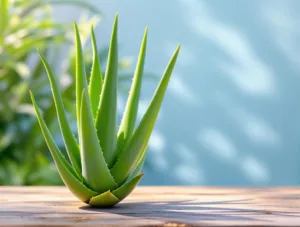The Ultimate Guide to Managing Oily Hair: Causes, Solutions, and Natural Remedies
Introduction
Oily hair is a common yet frustrating issue that affects millions of people worldwide. Whether you find yourself washing your hair daily or struggling with limp, greasy strands just hours after shampooing, excessive oil production can be a persistent challenge. While sebum (the natural oil produced by the scalp) is essential for maintaining healthy hair, an overproduction can lead to an unattractive, weighed-down appearance and even contribute to scalp issues like dandruff and acne.
This comprehensive guide explores the root causes of oily hair, effective solutions, and natural remedies to regulate oil production. From understanding the science behind sebum to debunking haircare myths, we’ll provide actionable tips to help you achieve balanced, fresh-looking hair. Whether you have fine, straight hair prone to oiliness or simply want to extend the time between washes, this article will equip you with the knowledge to take control of your haircare routine.
Understanding Oily Hair: The Science Behind Sebum Production
What Causes Oily Hair?
Oily hair results from an overactive sebaceous gland, which produces sebum—a natural oil that moisturizes the scalp and hair. While sebum is vital for preventing dryness and protecting hair follicles, excessive production can lead to greasiness. Several factors contribute to this imbalance:
- Genetics – Some people naturally produce more sebum due to hereditary factors.
- Hormonal fluctuations – Androgens (male hormones present in both men and women) stimulate sebum production, which is why oily hair is common during puberty, pregnancy, or menstrual cycles.
- Overwashing – Frequent shampooing strips the scalp of natural oils, prompting it to produce even more sebum to compensate.
- Harsh haircare products – Sulfates and alcohol-based products can irritate the scalp, leading to increased oiliness.
- Diet and lifestyle – High sugar, dairy, and processed food intake may exacerbate oil production, as can stress and lack of sleep.
The Sebum Balance: Why Some Hair Types Are More Prone to Oiliness
Hair texture plays a significant role in how quickly oil becomes noticeable:
- Fine, straight hair – Sebum travels easily from the scalp to the ends, making oiliness appear more pronounced.
- Thick or curly hair – The natural texture slows oil distribution, so the scalp may feel greasy while the ends remain dry.
Understanding your hair type is crucial in selecting the right products and routines to manage oil production effectively.
Common Mistakes That Worsen Oily Hair
Many people unknowingly exacerbate oiliness through their haircare habits. Here are some key mistakes to avoid:
1. Overwashing Your Hair
Washing hair daily strips natural oils, signaling the scalp to produce even more sebum. Ideally, wash every 2-3 days and gradually extend the time between washes to retrain your scalp.
2. Using Heavy or Sulfate-Based Shampoos
Sulfates (like SLS and SLES) are harsh detergents that can over-cleanse the scalp. Opt for sulfate-free, clarifying shampoos designed for oily hair.
3. Overconditioning the Scalp
Conditioner should only be applied to the mid-lengths and ends—never the roots—to avoid weighing hair down.
4. Touching Hair Frequently
Hands transfer dirt and oils to the hair, making it greasier faster. Avoid brushing or touching your hair unnecessarily.
5. Using Hot Water for Washing
Hot water stimulates oil production. Instead, rinse with lukewarm or cool water to help regulate sebum.
Effective Solutions for Managing Oily Hair
1. Choose the Right Shampoo
Look for these key ingredients in shampoos:
- Tea tree oil – Antibacterial and regulates sebum.
- Salicylic acid – Exfoliates the scalp, preventing buildup.
- Clay (kaolin or bentonite) – Absorbs excess oil.
Recommended shampoos:
- Neutrogena Anti-Residue Shampoo (clarifying)
- Paul Mitchell Tea Tree Special Shampoo (balancing)
2. Incorporate Dry Shampoo
A lifesaver for extending washes, dry shampoo absorbs oil and adds volume. Apply to roots and brush through for a refreshed look.
3. Adjust Your Washing Technique
- Double cleanse – Use shampoo twice to ensure a deep clean.
- Scalp massage – Stimulates circulation without overstimulating oil glands.
4. Use a Lightweight, Oil-Free Conditioner
Avoid heavy creams; opt for water-based or leave-in conditioners that won’t weigh hair down.
5. Try a Scalp Treatment
- Apple cider vinegar rinse (1 part ACV, 3 parts water) balances pH.
- Aloe vera gel soothes and reduces excess oil.
Natural Remedies to Regulate Oil Production
1. DIY Clay Masks
Bentonite or kaolin clay mixed with water can absorb excess oil. Apply to the scalp, leave for 10-15 minutes, then rinse.
2. Green Tea Rinse
Green tea contains tannins that reduce sebum production. Brew, cool, and pour over hair after shampooing.
3. Witch Hazel Toner
A natural astringent, witch hazel can be dabbed onto the scalp with a cotton pad to control oil.
4. Dietary Adjustments
- Reduce dairy and sugar – Linked to increased oil production.
- Increase omega-3s (found in fish, flaxseeds) – Promote scalp health.
Final Thoughts: Long-Term Strategies for Balanced Hair
Managing oily hair requires a combination of the right products, washing habits, and lifestyle adjustments. Instead of fighting oiliness with harsh treatments, focus on balancing sebum production naturally. Gradually reduce washing frequency, choose gentle yet effective products, and incorporate scalp-friendly remedies.
Key Takeaways:
✔ Wash hair every 2-3 days to prevent overproduction of oil.✔ Use sulfate-free, clarifying shampoos with natural astringents like tea tree oil.✔ Apply conditioner only to ends—never the scalp.✔ Incorporate dry shampoo and natural treatments like clay masks.✔ Adjust your diet and stress levels to support scalp health.
By understanding the causes and implementing these strategies, you can achieve fresh, balanced hair without daily washing. Embrace a haircare routine that works with your scalp’s natural processes, and enjoy healthier, grease-free locks.
Would you like personalized product recommendations based on your hair type? Let us know in the comments!









Add comment